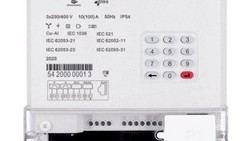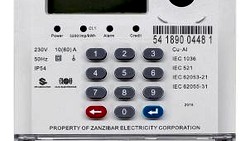The modern electricity grid faces numerous challenges that require innovative solutions. One major issue is the mismatch between supply and demand, which can lead to blackouts if not properly managed. In recent years, electrical energy storage has become increasingly important as a means to address this imbalance. Batteries offer several advantages over traditional flywheels, making them a popular choice among power generation facilities. This paper discusses these benefits and explores how battery technology is transforming the industry.
Energy Storage Challenges
Power generation facilities must overcome three primary obstacles related to energy storage: duration, frequency response time, and flexibility. These variables dictate the amount of stored energy available at any given moment, impacting overall system reliability. Traditional flywheels have been used for centuries to store and release energy. In power generation facilities, flywheels are used as mechanical energy storage devices to stabilize the output frequency and improve the power factor. However, flywheels have several disadvantages, such as their limited storage capacity, high maintenance costs, and low efficiency. Furthermore, advancements in battery technologies like Lithium Iron Phosphate (LFP) now make them viable alternatives for energy storage.

Battery Technology Advances
The development of advanced battery systems has transformed the energy landscape by providing better durations for storing energy than other methods. LFP batteries are now able to store more electricity due to increased cell size and improved chemistry. Moreover, these batteries are capable of charging/discharging faster than flywheels, allowing power generators to quickly respond to sudden changes in electricity demand or supply.
Battery Economics
Cost efficiency is another key factor driving the adoption of batteries in the energy sector. While upfront costs may seem prohibitive, savings realized through reduced operational expenses tend to offset initial investments within five to seven years. As energy storage becomes less expensive, batteries will likely replace conventional methods such as flywheels, particularly in high-capacity applications.
Maintenance Consideration
While cost reduction makes batteries more attractive to power generators, maintenance plays an essential role in ensuring safe operations and maximizing longevity. By implementing proper battery management systems (BMS), facility managers can monitor temperatures, control currents, and prevent potential hazards associated with degraded cells. Effective management leads to extended life cycles for lithium-ion batteries. With regular monitoring and maintenance schedules, operators achieve long service lives without compromising performance.
Takeaway
Electrical energy storage using batteries offers numerous advantages in terms of economics, flexibility, and efficiency. Benefits such as longer operating periods, rapid response times, lower maintenance requirements, and decreased health risks prove compelling reasons for replacing legacy technologies like flywheels. Though initial investment remains a barrier to wider implementation, continued improvements in battery technology, along with declining manufacturing costs, suggest batteries will soon dominate the electrical energy storage market for power generation facilitates. Therefore, considering both economic and environmental factors, embracing advancements in battery technologies appears essential to ensure the future sustainability and stability of our global power grids.
At CLOU, we strive to be your trusted partner in all things related to energy storage and battery management systems. Whether you need assistance selecting the perfect solution for your specific needs or want guidance on maintaining optimal performance, our knowledgeable team of professionals is here to help. Reach out today and start benefiting from our expertise.
Editor's note: This article was originally published in June 2023 and has been updated for comprehensiveness.





Totalmente de acuerdo con su articulo de los Flywheels versus las baterias de almacenamiento. Nosotros hace tiempo visitamos en Austin, US, una fabrica, la mas importante de US, y ofrecimos en Latino America para Edificios, Industrias, pero eran de muy corta duración , no mas de 10 minutos. Muy interesante su articulo ya que abrirá los ojos a los Ejecutivos para el mayor uso de baterias en sus operaciones, y no solo las EE.
Hola Mariano Orellana,
Gracias por tu comentario en nuestro artículo sobre el almacenamiento de energía eléctrica. Me alegra saber que estás de acuerdo con nuestras conclusiones sobre los flywheels y las baterías de almacenamiento. Es interesante escuchar tu experiencia al visitar una fábrica en Austin, Estados Unidos, y cómo ofrecieron soluciones de almacenamiento para edificios e industrias en Latinoamérica, aunque con una duración limitada de 10 minutos.
Nos complace saber que nuestro artículo ha despertado el interés y la atención de los ejecutivos, y esperamos que pueda fomentar un mayor uso de las baterías en sus operaciones. El almacenamiento de energía eléctrica es una tecnología en constante evolución y creemos que tiene un gran potencial para impulsar la eficiencia y la sostenibilidad en diversos sectores.